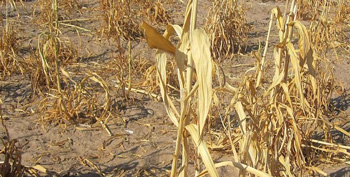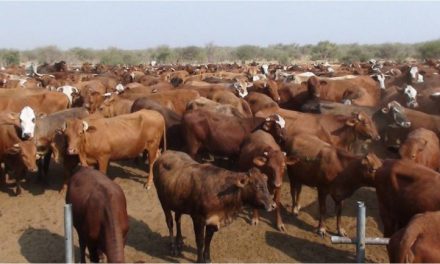
Cereal crops increase 50% on last year but still below average
Following an earlier assessment of cereal crops in communal areas, the Ministry of Agriculture, Water and Forestry remains concerned that the on-going harvesting may produce disappointing results despite the late rains in April. The ministry said many reports were received of crop damage due to rain.
The Namibia Early Warning and Food Information Unit (NEWFIU) of the Directorate of Planning in the Ministry of Agriculture, Water and Forestry, undertook its first Crop Assessment mission in the six communal crop producing regions during February.
This survey assessed crop condition in the major communal agronomic areas to provide an early warning report of agronomic anomalies, the effects of floods, droughts, and other significant events.
The mission was conducted in collaboration with the Meteorological Service of Namibia in the Ministry of Works, Transport and Communication. Also involved were the Regional Councils and Directorate of Extension and Engineering Services.
The early warning unit pointed out that the assessment was valid for the earlier part of the season, and that conditions have changed over the past two months.
Various crop stages were observed ranging from vegetative, flowering and grain formation. In spite of these stages, it was too early to give a definite quantitative forecast of the season’s outcome.
However, it is possible to provide some preliminary indications, based on latest rainfall data, field observations and qualitative farmer interviews, as well as briefing information from the Office of the Regional Councillors and crop situation reports from agricultural extension officials.
Much of the information was obtained during the crop assessment mission conducted in the Zambezi, Kavango East and West, Omusati, Ohangwena, Oshana and Oshikoto regions by the crop assessment team. Moreover, secondary information from various sources such as grazing conditions from livestock producing regions and production estimates from the commercial areas through the Namibia Agronomic Board (NAB) were also used.
Rainfall performance for the 2013/2014 rain season showed mixed performance with above normal rainfall confined in the north east, central and some parts in the south.
Elsewhere, the cumulative performance of the season depicts near normal to below normal rainfall.
In contrast, the north central regions reported poor rainfall performance, which according to farmers have been sporadic, erratic and insufficient in the first half of the season with serious prolonged dry spells in January and most of February, affecting both crop production and livestock production.
However, heavier falls relative to normal were experienced from the end of February and during most of March.
Provisional crop estimates indicated a slight improvement in the expected harvest; better than last season, but still below average.
The outlook indicated that, all communal crop producing regions are expecting below average harvests, following poor rainfall performance coupled with damages by American Boll worms.
Poor rainfall performance was recorded more in the northern central regions, resulting in poor crop germinations and wilting of crops and subsequently poor expected crop harvest.
National cereal production is provisionally forecast at 122,390 tons, reflecting an increase of 50% over last season’s harvest but still 2% below average. Much of this improvement comes from the commercial areas where most of the production is under irrigation.
Food security has actually weakened and remains fragile in the regions as the hunger season reached its peak. Most households interviewed have indicated that the previous season’s poor harvest only last until July and August last year and they are currently dependent on the market and drought relief food assistance for food access.
Livestock condition in most regions is reported to have improved from poor to good, except in the Kunene region and some areas in the Karas region where grazing conditions range between poor and fair. At the time of this assessment, no major livestock disease outbreaks were reported.












































